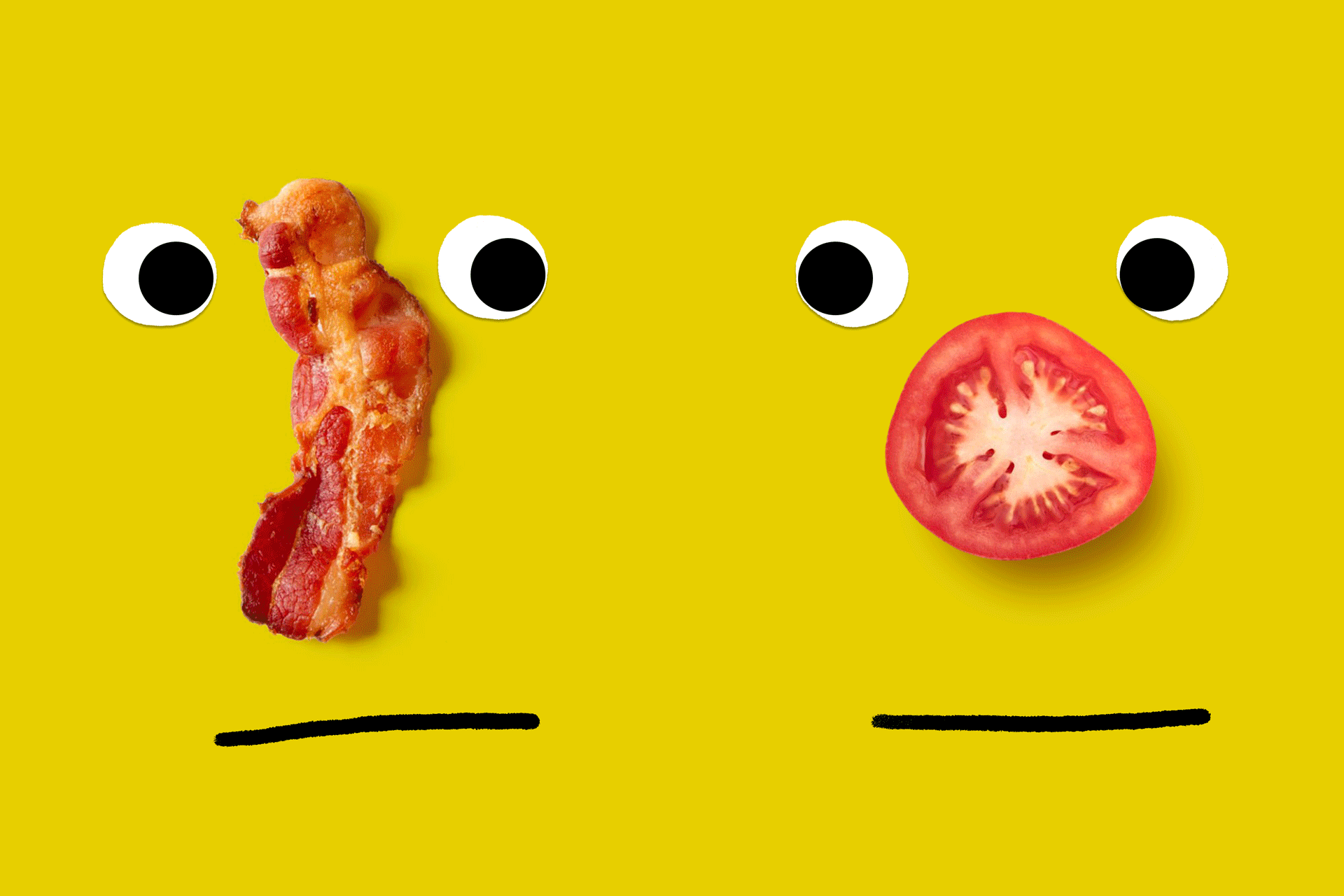Sniffing Out Genes’ Role in Our Senses of Taste and Smell
- Share via
PHILADELPHIA — Armed with jellybeans, Q-tips dipped in bitter liquid and an assortment of rare truffles, Marcie Pelchat is facing a great scientific mystery: the human tongue.
Pelchat is one of a small army of scientists at the Monell Chemical Senses Center here--the only place in the world devoted solely to studying what was, until recently, a research backwater: the senses of taste and smell.
Today, the study of the chemical senses is suddenly in vogue, fueled by rapid advances in genetics and neuroscience, the growing public health crisis of obesity and that old standby--America’s obsession with food.
New research in the field is overturning a host of myths about how taste and smell work and proving that many food desires are hard-wired: Some of us carry a gene that leads to a sweet tooth, and a quarter of us are “supertasters” with tongues so loaded with taste buds that they’re hypersensitive to bitter, sweet, salty and sour tastes.
Among scientists’ goals: to sort out how these differences in taste and odor perception--along with genetics and culture--weave together to form food cravings and preferences that can eventually lead to obesity, alcoholism or malnutrition.
Already, research on the tongue has contradicted just about everything you probably learned about taste in high school.
There is no such thing as a strict “tongue map,” with the tip of the tongue for salty and sweet tastes, the sides for sour and the back for bitter. “It’s just not true at all,” said Linda Bartoshuk, a professor in the Yale University School of Medicine who has studied taste for a quarter-century. All things can be tasted on all parts of the tongue, she said.
There’s also a fifth taste now on scientists’ radar screen, named “umami” by its Japanese discoverers. It’s the taste for things meaty and savory, or in some translations, things “wonderfully tasty.”
And taste buds don’t exist only on the tongue, says Joseph Brand, a biochemist and associate director at Monell. Taste buds go all the way to the stomach--though we perceive tastes only in the mouth and top of the throat. Buds in the deep recesses of the mouth are considered evolutionarily crucial because they could warn of a bitter poison as it’s about to be swallowed.
“That’s important,” said Brand, “because eating is a potentially dangerous behavior.”
Brand can reel off fact after fact about the tongue--all startling to the uninitiated. The taste cells you use for breakfast aren’t the same ones you’ll use for dinner. Taste cells at the tip of a taste bud last only about eight hours before they die.
The little bumps all over your tongue aren’t taste buds. There are a smattering of taste buds--one to seven--in the small round bumps, or papillae, on the front of your tongue. Most taste buds are in the back of the mouth; the large bumps on the back of the tongue can carry as many as 400 taste buds each.
A colleague of Brand’s, John Teeter, is studying the even subtler workings within the taste bud. Each bud contains 100 to 200 cells of different types that are densely packed together and occasionally coupled via temporary openings between cells called gap junctions.
“Who knows what they all do,” said Teeter, an accomplished cellular physiologist.
To understand the tongue and its taste buds, the two scientists have turned to an unlikely ally: the catfish. The basement of Monell is filled with tanks of various species, from the channel catfish of the Delaware River to four-lined catfish from South America.
Catfish have a remarkable ability to detect food across long distances and across murky water because their bodies are studded with about 150,000 taste buds. Dribble a few amino acids (components of protein) into water and a catfish will find them instantly.
“You can think of them as swimming tongues,” said Brand.
Upstairs, at the entrance of Monell, stands an immense golden statue of a partial face--nose and mouth only. The welcome mat, and prints on the walls, are emblazoned with noses and mouths.
Scientists here seem obsessed with sticking things into the mouths and noses of visitors--the more noxious the better. Within five minutes of entering Monell, geneticist Danielle Reed enticed a visiting reporter into tasting a small piece of paper laced with a chemical compound bitter enough to knock some people off their chairs.
She seemed slightly disappointed by the moderate response. “I don’t think you’re a particularly strong taster,” she said. “Otherwise you’d be making a big fuss about it for a long time.”
Reed is particularly interested in taste differences among individuals and the genetics that underlie those differences. She’s currently in a mad race to find a gene in mice called “SAC,” for saccharine, recently dubbed the “sweet tooth” gene in the press.
Others searching for the gene include the lab of Charles Zuker, a neuroscientist at UC San Diego who earlier this year discovered a family of 80 different taste receptors that help mammals identify a wide range of bitter, and sometimes poisonous, tastes in nature. The lab took a few Goldilocks-like turns in its quest. He abandoned fly tongues (too small) and cow tongues (absurdly huge at 3 1/2 feet) before settling on the dainty yet workable rat tongue.
The search for genes controlling sugar preference started when scientists noticed that one strain of laboratory mouse lapped up sugar water with far more enthusiasm than its colleagues.
“They’re party animals,” Reed said. Mice in that strain “like morphine. They like alcohol. They like fat.”
While human and mouse preferences for alcohol, drugs and even salt seem to result from some murky blend of genes, behavior and experience, the sugar story is one where genetics plays a clearer role, said Reed. It’s simple to breed a mouse with a sweet tooth: They drink more sugar water, their brains react more strongly to sugar and they don’t, lucky things, pack on weight from their sweet habits.
Reed is confident future work will yield similar findings in humans, including a genetic basis for seeking out fat.
“I don’t think it’s going to be ‘One gene is the chocolate gene,’ ” she said. “But there are going to be genetic predispositions in food preferences.”
Some of Reed’s colleagues have less pleasant preoccupations. Charles Wysocki, an olfactory expert, is on a mission to find a way to mask foul environmental odors, from “nasty underarm smell” to the fetid reek of some pig farms. The odors come from a 300-head pig farm in western Pennsylvania. The volunteer sniffers come from downtown Philadelphia.
“We pay well,” he said. “We have to pay well.” At times his subjects submit to holding vials of pig feces mixed with decomposing food under their noses.
Wysocki is fascinated by the range of reactions he gets to the aromatic pig hormones. “Some think it’s disgusting, horrible, smells like stale urine,” he said. Others, including female pigs, presumably “think it’s a nice, musty perfume.”
Wysocki’s other mission is to remind anyone who will listen about the inextricable, often overlooked connection between taste and smell.
“When a person is eating or drinking, they typically say they’re tasting--when most of that is coming through the nose,” he said.
Try this at home: Plug your nose and eat two differently flavored jellybeans. Without smell, you won’t know the difference.
“If you have individual differences in odor perceptions, there are going to be differences in what is taken from the table,” he said.
Studying such food preferences, cravings and why we have them is the purview of Pelchat, a psychologist at Monell.
Many questions she works on have not yielded simple answers: What role do differences in taste perception play in alcoholism? What role do they play in obesity?
It’s not just taste that’s involved. Emotions, upbringing and even the specific taste of mother’s milk to an infant all influence “hedonics,” or the liking of food, said Pelchat.
“It’s a mystery because it’s so complicated,” she said. “There’s not a simple relationship between chemical senses and food selection.”
Some of the most surprising research has come from Bartoshuk’s lab at Yale. In the late ‘80s, she discovered “supertasters”--a quarter of people who reported that a bitter substance called PROP commonly used in taste research was “outrageously bitter.” To these folks, sugar is sweeter, grapefruits are more bitter and spices are hotter.
“All of a sudden we were facing the fact that supertasters live in a different world,” said Bartoshuk, a non-taster with an appetite for steak, fries and hamburgers.
Further work by Bartoshuk showed that supertasters had three times as many taste buds as non-tasters--those who do not respond to the bitter compound PROP. Bartoshuk is now chasing more elusive connections between supertasters and obesity. In general, supertasters are slimmer, perhaps because they don’t like overly sweet or fat foods. However, among the obese, supertasters are heavier.
Even more intriguing is work to determine whether supertasters have higher rates of cancer and heart disease because they avoid vegetables containing bitter compounds that may inhibit tumors and lower cholesterol.
“When I first started, I thought food preferences were all cultural, all learned, that nothing sensory would matter. I couldn’t have been more wrong,” said Bartoshuk.
“There’s a lot of basic biology driving our food preferences that we aren’t aware of.”
(BEGIN TEXT OF INFOBOX / INFOGRAPHIC)
On the Tip of Your Tongue
Researchers have found that about 25% of people are “supertasters.” They have far more of the structures that contain taste buds on their tongues than others and find a bitter substance used in taste research, called PROP, to be extremely distasteful. Supertasters are more sensitive to sweet, bitter and sour tastes and to fat. Supertasters may be less likely to be overweight or alcoholics because of their discriminating palates. But they may be at higher risk for cancer because they may avoid cancer-fighting vegetables that can taste bitter.
*
Taste Test
Try this at home: To see if you’re a supertaster or not, dab a few drops of blue food coloring on your tongue and swish it around. The pink circles that pop through the blue background are fungiform papillae, skin-like structures that house taste buds. Punch a hole in a piece of paper with a hole punch and place the paper on your tongue. Count the number of papillae in the hole. In general, non-tasters will have none to 15 buds in the hole, moderate tasters will have 15 to 35, and supertasters will have 35 or more papillae.
*
Source: Linda Bartoshuk, Yale University School of Medicine; Society for Neuroscience. *






